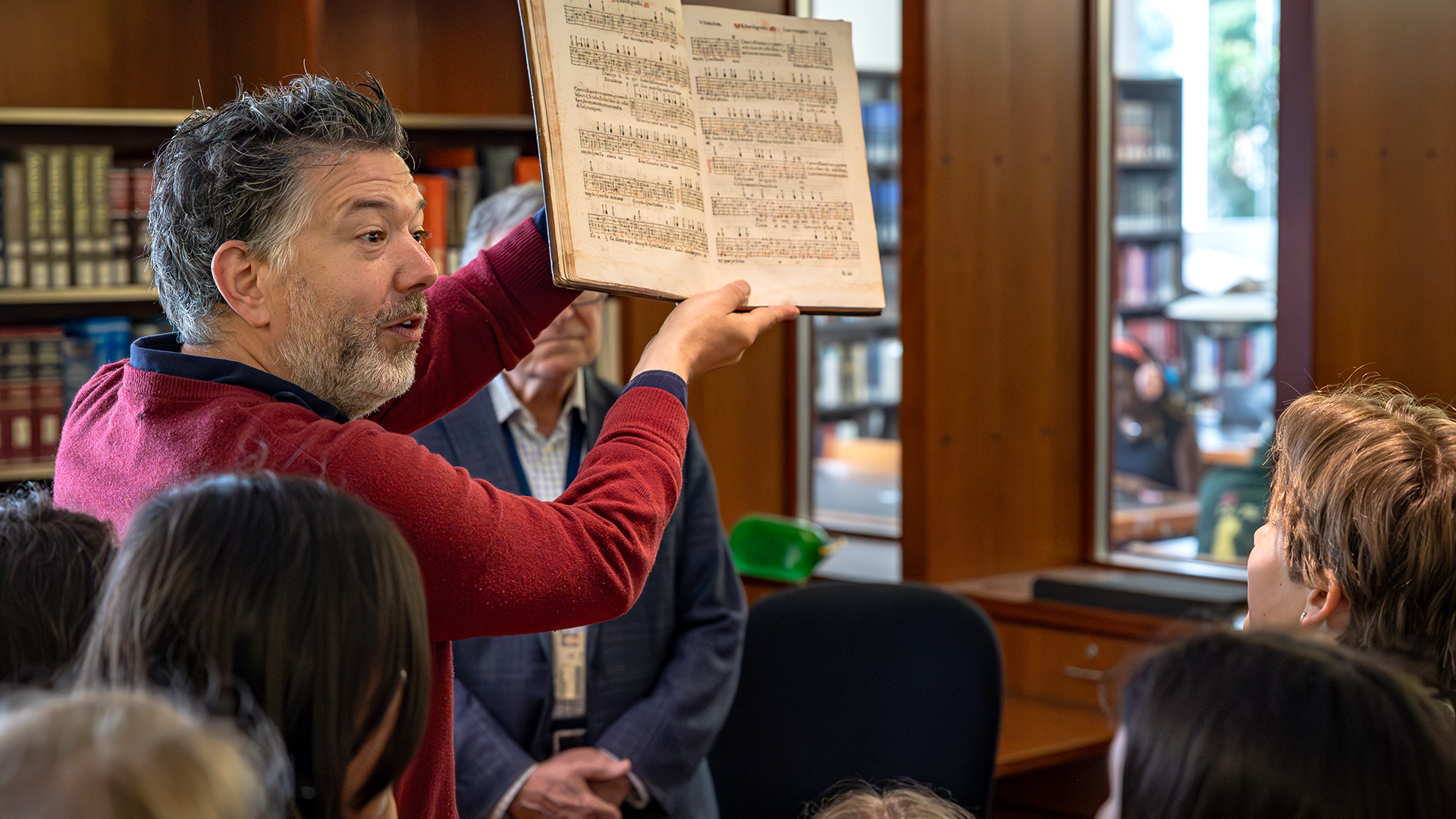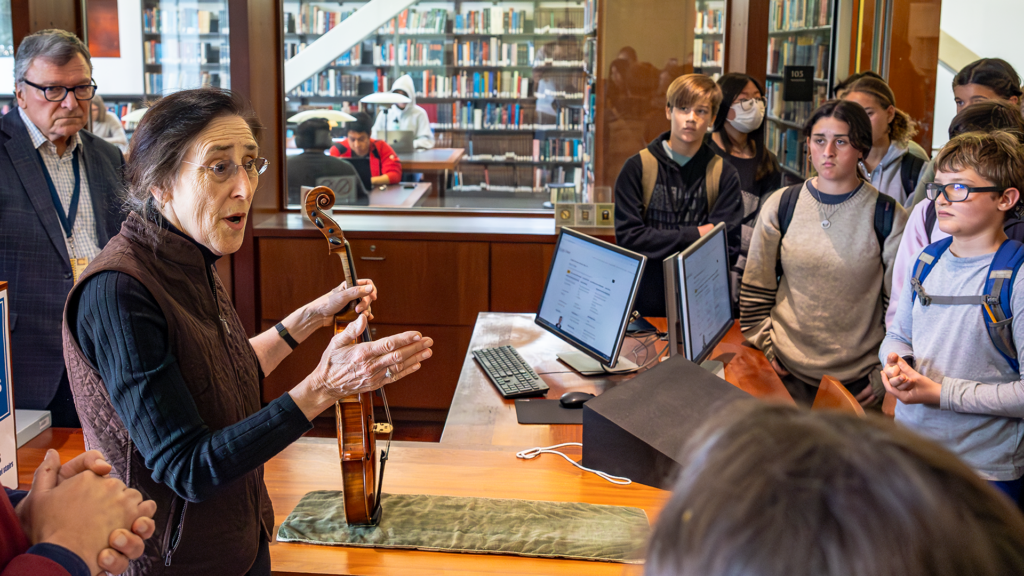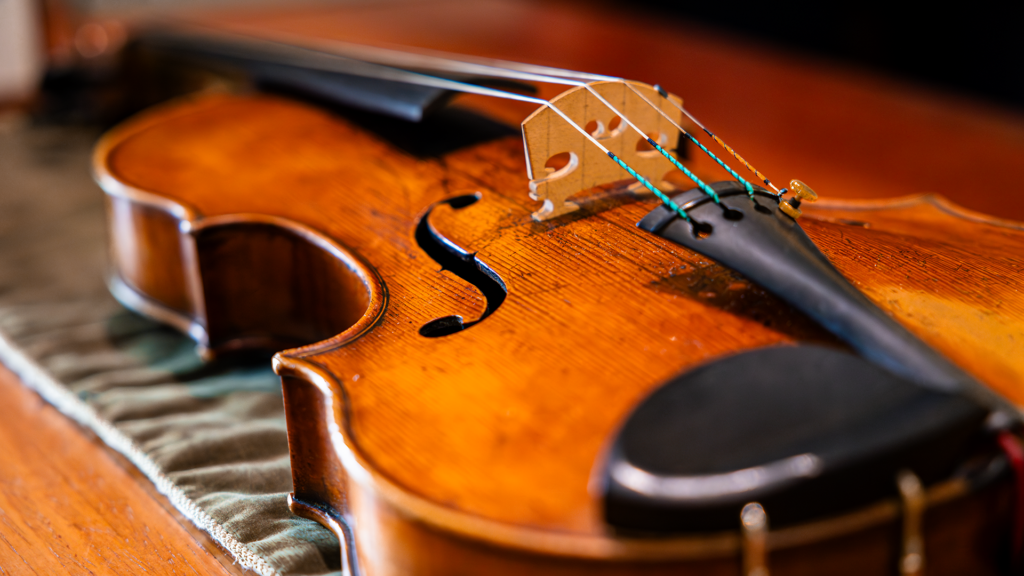Middle school students explore musical treasures from special Berkeley collections
During a field trip to campus, the students were introduced to an early Spanish-language guitar book and viola from the 16th and 17th centuries, both held in the music department's collections.

Grant Kerber/UC Berkeley
May 2, 2024
It isn’t every day that we get to interact with musical treasures from the 16th and 17th centuries, held in a special UC Berkeley collection. But last week, Berkeley public middle school students got to do just that.
The students, hosted by Berkeley Music Professor Nicholas Mathew, began their visit at one of the campus’s Noon Concerts, free weekly performances presented every semester in Hertz Concert Hall by the Department of Music. The concert series began more than 70 years ago in 1953. The talkative students filed into the front rows of the hall and took their seats.

Grant Kerber/UC Berkeley
“It is so important to me that we get kids from Bay Area public schools onto campus as early and as often as possible, interacting with our faculty and our world-renowned resources,” said Mathew, Richard and Rhoda Goldman Distinguished Professor in the Humanities. “Music can be a compelling channel of communication between local schools and the university, I think. Everywhere, you will discover kids, from all walks of life, who are passionate about music of all sorts.”
The University Baroque Ensemble, a campus musical group that reimagines the repertoire and improvised practices of the 17th and 18th centuries, performed a set of quirky compositions that Bach would have known, including Heinrich Biber’s wild and chaotic musical depiction of a rowdy German pub. The ensemble is comprised of violins, violas, cellos, harpsichord, chamber organ, harp and other period instruments.
After the concert, the students walked to the Jean Gray Hargrove Music Library, where they met with Mathew and Berkeley Law lecturer Carla Shapreau, an instrument builder and curator of the music department’s Salz Collection of historic strings.
There, the students got to experience one of the most precious items in the collection: a stunning viola dating from around 1620, made by the legendary Amati family, celebrated Italian violin makers in Cremona, Italy, in the 16th and 17th centuries.
Mathew and Shapreau discussed the 400-year-old viola’s history and answered questions from the students, about the types of wood it was constructed from, its numerous design innovations and the elaborate coat of arms, with dancing musical cherubs, that a noble family later painted on the back of the instrument.
“Our expressive physical interactions with historic objects can teach us as much about the past as surviving textual descriptions,” said Mathew.
Students also got to interact with an even older musical artifact: Diego Pisador’s 1552 volume, Libro de mùsica de vihuela. The early Spanish-language guitar book, presented to the students by John Shepard, curator of music collections for the campus’s Jean Gray Hargrove Music Library, includes a range of 16th-century music, from solemn church compositions to toe-tapping popular songs.

Grant Kerber/UC Berkeley
“The elaborately printed texts of these popular songs were of particular interest to the many Spanish speakers and Spanish learners in the group,” said Mathew, who organized this event as a small part of a program he initiated last year for Bay Area public school students, which will emphasize learning through the historic Spanish-language materials held in the music library.
Mathew and the group discussed how several songs from Libro were disseminated by European colonists in 16th century California and Mexico, and in some cases were even imitated and transformed by Indigenous populations.
“Our local schools have a huge number of Spanish speakers and Spanish learners,” said Mathew. “Working with the many centuries-old Spanish-language materials in our music collection is not only a great way to practice language skills, but a good reminder that valuable old music doesn’t just mean Bach, but also all the Spanish dances and songs that were already right here in California before Bach was even born.”
The students were accompanied by conductor and instrumentalist Carlotta Jacobs of the Berkeley Unified School District. Mathew said these visits, which take place every semester, are made possible by dedicated and inspirational music teachers in Bay Area public schools, who cultivate a passion for music in their students every day.